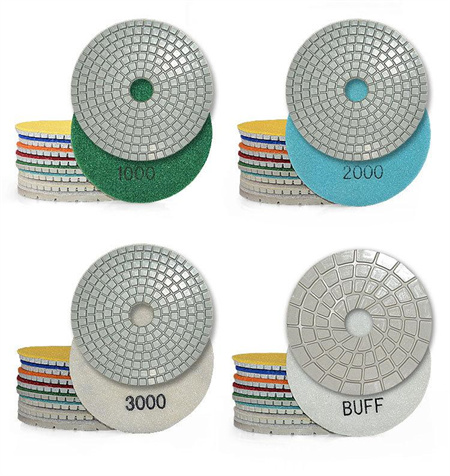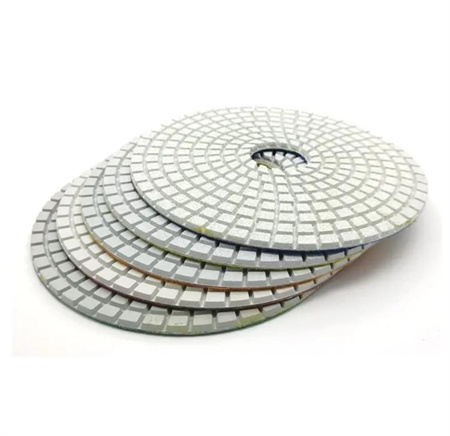How to Compare Polishing Pads Across Different Brands
When it comes to achieving that perfect, mirror-like finish on your vehicle, the right polishing pad can make all the difference. However, with so many brands and types on the market, choosing the best one can feel overwhelming. Whether you’re a professional detailer or a DIY enthusiast, understanding the nuances between different polishing pads is essential. Here’s a guide to help you navigate the world of polishing pads, and make a well-informed decision about which one works best for your needs.
The Material Makes a Difference
The first factor to consider when comparing polishing pads across brands is the material. Polishing pads come in a variety of materials, each with its own advantages and drawbacks. Foam pads are the most common, but you’ll also find microfiber, wool, and hybrid options.
– Foam Pads: Generally, foam pads are the go-to for most detailing projects. They’re versatile, come in different levels of softness and firmness, and are designed for both polishing and compounding. You’ll find pads with different cell structures, such as open-cell (better for applying polishes) and closed-cell (ideal for cutting and reducing defects).
– Microfiber Pads: Microfiber pads are gaining popularity for their ability to cut through paint imperfections faster. They work well with both cutting and polishing compounds, offering a smooth finish while leaving less residue behind. The key advantage of microfiber is its higher abrasion rate, which can help when dealing with heavy imperfections, though they can be harsher on delicate surfaces if used incorrectly.
– Wool Pads: Wool pads are typically used for heavy cutting jobs. If your car’s paint has deep swirl marks or scratches, wool is often the material of choice. These pads are aggressive and help to quickly remove defects, but they can leave micro-marring, so they require careful handling and a more experienced touch.
– Hybrid Pads: Hybrid pads combine the benefits of both foam and microfiber. These offer the versatility of foam with the cutting power of microfiber, making them a good option for both enthusiasts and professionals who need a balance between performance and safety.
The Pad’s Density and Firmness
Another key factor is the pad’s density and firmness. Pads can vary from soft to firm, with each type serving a different purpose.
– Soft Pads: Soft pads are used primarily for polishing and finishing. They help create a smooth, glossy surface without causing damage to the paint. They’re perfect for delicate surfaces or after the cutting phase to remove light imperfections and create a swirl-free shine.
– Firm Pads: These are great for more aggressive work. If you’re dealing with heavy oxidation, deep swirl marks, or significant defects in the paint, you’ll want to reach for a firmer pad. Firm pads provide more pressure and can work faster, but they may also introduce micro-marring if not used carefully.
Choosing the right firmness depends on the condition of your car’s paint. For a light polish on a relatively new car, a soft pad might be the best choice. For older vehicles with more wear and tear, a firmer pad might be necessary to correct imperfections effectively.
Durability and Quality
Durability is another aspect worth considering. A high-quality pad will not only last longer but will also maintain its performance throughout the polishing process. Cheap pads often wear down quickly or degrade in performance after just a few uses. Top-tier brands invest in higher-quality materials that resist heat buildup and excessive wear.

Brand Reputation and Customer Reviews
Brand reputation is crucial when evaluating polishing pads. Some brands have built a name for themselves based on their consistent quality, while others are still building their reputations. When you’re shopping around, take the time to read customer reviews and expert opinions. Reviews can provide valuable insights into a product’s performance, durability, and effectiveness.
Popular brands like Meguiar’s, Chemical Guys, and Rupes have a proven track record in the detailing world, while newer brands might offer competitive products at lower price points. It’s important to weigh the pros and cons, and not just focus on price, but also consider the overall performance and user satisfaction.

Not all pads are compatible with every polishing machine, so it’s essential to match your pad to your tool. Some brands design their pads specifically to work with certain types of machines, whether it’s a dual-action polisher or a rotary machine. Make sure that the pad you choose is the right size and shape for your machine to avoid unnecessary vibration or an uneven application.
Price and Value
Price is always an important consideration, but it’s not the only factor that should determine your choice. Some high-end pads may seem expensive upfront, but their performance and durability can justify the investment. On the other hand, cheaper pads may require frequent replacements, resulting in a higher cost over time.

Conclusion
Choosing the right polishing pad is more than just picking the cheapest option. It’s about understanding the material, firmness, durability, and compatibility with your machine. By considering these factors and comparing products from various brands, you can select the perfect pad for your needs. Whether you’re trying to remove swirls, restore shine, or perform a full paint correction, the right polishing pad can take your detailing efforts to the next level, providing results that speak for themselves.